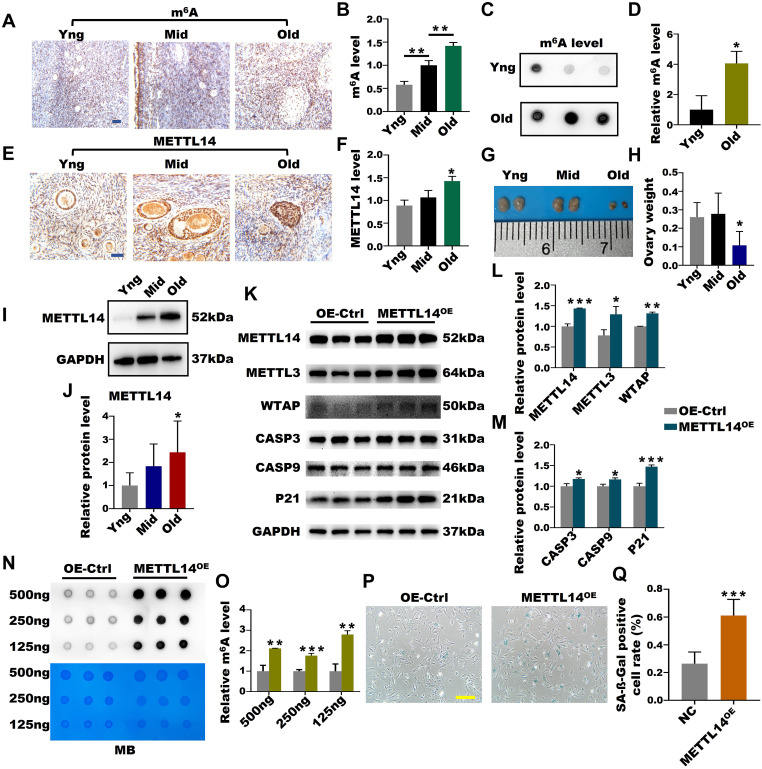
Increased N6-methyladenosine is related to the promotion of the methyltransferase METTL14 in ovarian aging


The ovary is a vital female reproductive organ that functions to produce oocyte gametes and cyclically expressed sex hormones to maintain reproductive capacity and hormone homeostasis. Ovarian aging, characterized by declines in follicle quantity and oocyte quality, leads to premature ovarian failure, premature ovarian insufficiency, or diminished ovarian reserve, thus contributing to female infertility. Distinct gene-expression signatures from RNA transcriptional level and post-transcriptional regulation are relative to oocyte quality and reproductive age.1 Mouse follicular transcriptome-wide N6-methyladenosine (m6A) landscape revealed that dynamic m6A modification exists in the process of maternal-to-zygotic transition, which depended on the regulation by the m6A methyltransferase complex.2 m6A writing mediated by maternal methyltransferase-like 3 (METTL3) is a key role in the establishment of m6A on oogenesis and pre-implantation embryo development.2 Methyltransferase-like 14 (METTL14) serves as the core subunits to catalyze effective methyl group transfer and is an important role in promoting the aging-associated phenotype and reprogramming.3 However, the regulatory mechanisms from m6A association complements during the process of ovarian aging remain incompletely explored.
